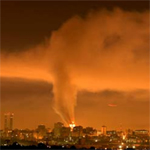Disaster can strike in a matter of seconds. On February 12, a fire turned the Windsor building, one of Madrid’s most famous skyscrapers, into ashes. At the very center of the capital’s financial district, the Windsor was home to the Deloitte consulting group and three departments of the Garrigues law office. Hundreds of documents, confidential memos and critical data files were reduced to ashes. This information was crucial for companies that were using these firms to prepare their annual reports. The origins of the fire remain unknown. Clearly, it would have been a catastrophe if the companies had not counted on contingency plans and back-up centers, which allowed them to resume operations fairly easily, in a matter of hours. Experts recognize that companies are becoming more and more aware of the importance of being prepared for any sort of tragedy.

Sign up to stay informed about our latest article releases.